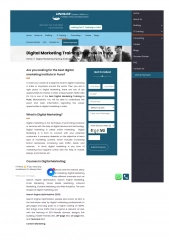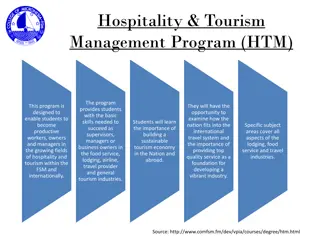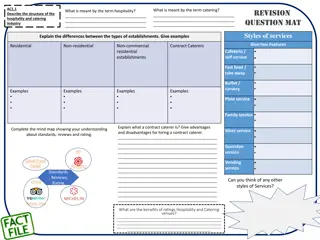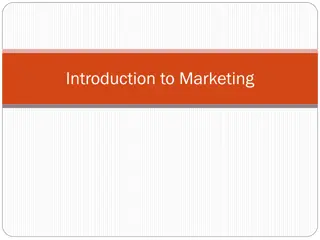
Market Segmentation, Targeting, and Positioning Explained
Learn about market segmentation, targeting, and positioning in this detailed guide. Understand the concept of market segments, the process of segmentation, and the steps involved in targeting and positioning for effective marketing strategies.
Uploaded on | 8 Views
Download Presentation

Please find below an Image/Link to download the presentation.
The content on the website is provided AS IS for your information and personal use only. It may not be sold, licensed, or shared on other websites without obtaining consent from the author. If you encounter any issues during the download, it is possible that the publisher has removed the file from their server.
You are allowed to download the files provided on this website for personal or commercial use, subject to the condition that they are used lawfully. All files are the property of their respective owners.
The content on the website is provided AS IS for your information and personal use only. It may not be sold, licensed, or shared on other websites without obtaining consent from the author.
E N D
Presentation Transcript
CHAPTER FOUR MARKET SEGMENTATION, TARGETING, AND POSITIONING
Market Original Meaning- a physical place where buyers and sellers gathered to exchange goods and services. Economists- all buyers and sellers who transact for a good or service. Marketer-set of all actual and potential buyers of a product.
Market Segments and Market Segmentation Market segment: a group of customers who share a similar set of wants. Market segmentation: the act of dividing a market into distinct groups of customers who might require separate products and/or marketing mixes.
Steps in Market Segmentation, Targeting,and Positioning Market Segmentation Targeting Market Positioning Market 5. Identify possible positioning concepts for each target segment 1. Identify segmentation variables and segment the market 3. Evaluate attractiveness of each segment 4. Select the target segment(s) 6. Select, develop, and communicate the chosen positioning concept 2. Develop profiles of resulting segments
Effective Segmentation Size, purchasing power, profiles of segments can be measured. Measurable Substantial Segments must be large or profitable enough to serve. Segments can be effectively reached and served. Accessible Segments must respond differently to different marketing mix elements & Differential actions. Must be able to attract and serve the segments. Actionable
Bases for Segmenting Consumer Markets Geographic Region, City or Metro Size, Density, Climate Demographic Age, Gender, Family size and life cycle, Race, Occupation, or Income ... Psychographic Lifestyle or Personality Behavioral Occasions, Benefits, Uses, or Attitudes
Demographic age, sex, income, education, occupation, religion, race, nationality, family size and stage reached in the family life cycle. Geographic involves dividing markets into different geographical units such as countries, regions, counties and cities.
Behavioral Occasions- regular, special occasion Usage rate- light user, medium user, heavy user. Buyer-readiness- informed, non-informed, knowledgeable, Loyalty status- Hard-core loyals, Split loyals, Shifting loyals, Switchers Attitude- enthusiastic, positive, indifferent, negative, hostile. Benefits- quality, economy, speed. User status- non-user, potential user, first-time- user, regular user.
Psychographic dividing buyers in to different groups based on social class, lifestyle (activities, interests, opinions), and personality characteristics/core values/.
MARKET TARGETING Evaluate the attractiveness of each segment and select the target segment The size and growth potential of each segment 1. Their structural attractiveness 2. Three factors need to be considered: The organization s objectives and resources. 3.
POSITIONING: THE BATTLE FOR THE MIND Positioning is therefore the process of designing an image and value so that customers within the target segment understand what the company or brand stands for in relation to its competitors. positioning has direct and immediate implications for the whole of the marketing mix.
USP ( Unique Selling Proposition) It means the one aspect of your product that makes you different from all other products. Steps in positioning Identifying the organization or brand s possible competitive advantages Deciding on those that are to be emphasized USP can be something real, which one product has over all others, such as the strong taste of Minto mints. Implementing the positioning concept.
Selecting the Right Competitive Advantages Three Errors 1. Confused positioning, 2. Over-positioning, 3. Under-positioning Important Distinctive Superior Communicable Preemptive Affordable Profitable
Positioning Strategies Types of positioning 1. specific product attributes 2. against an existing competitor The Best Position The Against Position The Niche Position The New Category
Thank You Very Much For your cooperation Your patience Your stamina






















